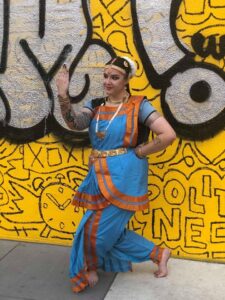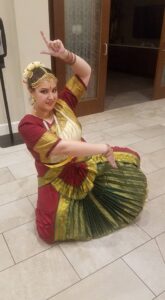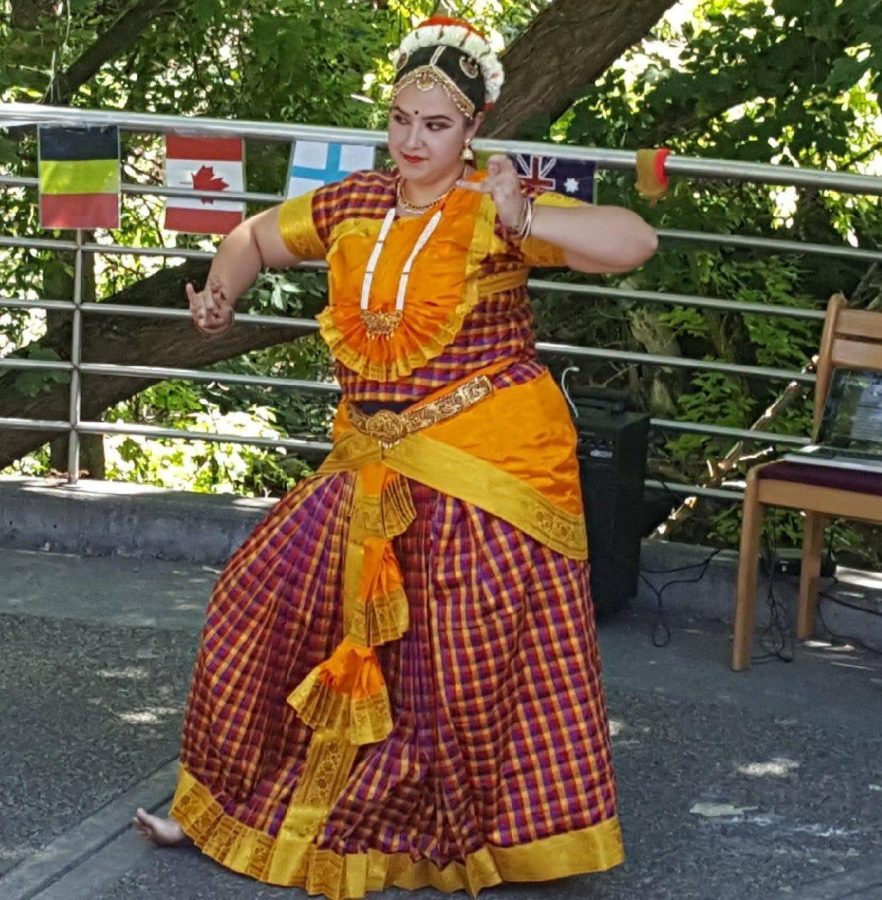The tradition of Indian dance goes back as far as the people’s rich cultural history. It is deeply interwoven with Hinduism and is beautiful for its precision and comprehensive storytelling. Every minute detail from the angle of the eyes in relation to the tension in the fingers has a meaning. There are eight kinds of classical Indian dance and many are still alive today, even in Salt Lake City, Utah.
Jurnee Clark began dancing almost six years ago.
“My mom took me to some sort of cultural program at the Krishna temple in Salt Lake, where Divya School of Dance performed. I thought the dancing style was beautiful so I decided to try the trial class and I fell in love. I remember my dance guru having to turn the fan on because I was sweating so bad, but I decided to stick with it despite it being so hard,” Clark said.

Clark dances in the style of Bharatanatyam, which is possibly the oldest dance form and the mother of all Indian dance styles. It originated in the Indian state of Tamil Nadu in temples before spreading across South India. It is performed by solo female dancers and illustrates “Hindu religious themes and spiritual ideas,” according to cultureindia. The Lord Brahma related the dance to a sage who then wrote it down in a sacred text, but despite its reverent conception, classical Indian dance is more of an art form than a religious practice today. “We do a lot of cultural programs and festivals — such as Living Traditions, university programs, et cetera — where the audience is pretty diverse. I enjoy those events because a lot of the time we are performing alongside other cultural groups and it’s fun to learn more about each other’s dance/music/etc. We also do some religious programs such as Janmashtami — Lord Krishna’s Birthday — or pujas, where the audience is mainly Hindu,” Clark said.

Clark loves classical Indian dance no matter where it is performed, although, for her, it is more about the joy of performing than a kind of religious exaltation. “I just find it more of a learning experience personally. I mainly feel more of a connection to stories centered around goddesses since I’m a girl and those pieces make me feel powerful,” Clark said. Her favorite story is probably “Aigiri Nandini,” which is a piece about the goddess Durga. Written by Guru Adi Shankaracharya, “Aigiri Nandini” is the story of how a goddess killed a demon. The goddess is Durga Maa, an incarnation of the goddess Parvati. She is the goddess of fertility, marriage and love, but also, as in this incarnation, strength and power. “Performing makes all the practice and hard work worth it. I love sharing this art form with other people,” Clark said. She continues to grow and share each year. It never hurts to expand one’s horizons. Check out the Krishna temples here in Utah or attend a classical Indian dance performance to bring an afternoon alive with color.
This article is part of the Poynter College Media Project. Click here for more stories and information on the topic “Are U Mormon?”



Kay • Jun 28, 2019 at 2:34 pm
Hello to every body, it’s my first go to see of
this weblog; this weblog consists of awesome and really good stuff in support of readers.